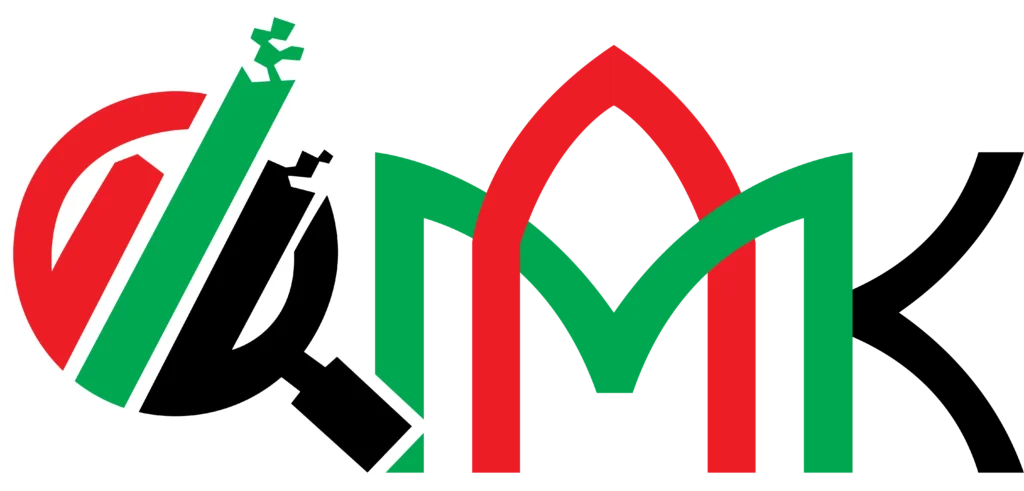IT Audit Firms in Dubai, UAE
Selecting the right audit firm for evaluating your IT processes is crucial, requiring experts trained in auditing with a keen eye for security. Mubarak Al Ketbi Chartered Accountants boasts such experts, proficient in conducting IT audit services in Dubai and providing additional support through IT auditors as needed. We are committed to going above and beyond to help you mitigate risks and safeguard your data. Our IT audit services encompass examining financial statements for compliance with IT policies, methods, controls, and business stability.
While internet technology advancements bring numerous benefits, they also pose various risks and threats. Businesses store vital information about their company and clients on their systems, necessitating vigilant attention to security risks. Mitigating these risks is vital to prevent security breaches, and a thorough IT systems audit proves invaluable in this regard.
In today’s successful organizations, regardless of size, effective utilization of technology systems is paramount for leveraging data. Investing in technology is crucial for business growth and progression, but reliance on IT can expose organizations to technological risks. This is where an IT audit firm steps in to ensure the integrity of a business’s technological infrastructure. IT auditors analyze and assess processes and systems to ensure they operate precisely, efficiently, and securely, in compliance with regulations.
IT Audit Assessment Services in UAE
An IT Audit/Assessment evaluates information systems and technology for organizations to ensure they function properly and align with business objectives. It helps in the effective, efficient, and secure use of technology and also aids in compliance with relevant standards and regulations. The process is conducted by independent auditors who evaluate and test the systems and technology used by organizations.
Information assurance – IA is the practice of assuring information and managing risks related to its use, processing, storage, and transmission. It encompasses protecting the integrity, availability, authenticity, non-repudiation, and confidentiality of user data. Detecting unnoticed vulnerabilities in the network is crucial as they can lead to unauthorized access, editing, copying, or deleting of valuable information, highlighting the key role of information assurance in safeguarding data authenticity and integrity.
Data breaches, caused by various factors such as viruses, trojans, worms, and phishing attacks, are common in the IT world. At MAKCA, we offer comprehensive services to address Information Assurance queries from customers, serving as their Information Assurance partner. We can assist in designing various concept phases of programs and guide throughout the program life cycle, from design to system disposal.
An IT audit assessment is a systematic evaluation of an organization’s information technology infrastructure, processes, and controls. Its primary objective is to assess the effectiveness, efficiency, and security of the organization’s IT systems and ensure compliance with industry regulations and best practices. These services help identify weaknesses, potential risks, and areas for improvement, empowering organizations to strengthen their IT governance and protect sensitive data from threats.
To effectively manage something, it must first be measured. Understanding your current business status allows us to address your IT challenges effectively. Benchmarking your IT function against eight key areas provides insights into your IT infrastructure’s status and its functionality within your business. Our free 10-minute IT Audit Assessment offers a snapshot of your IT needs, tailored specifically for small businesses.
In today’s business landscape, IT plays a crucial role. An IT audit examines and evaluates an organization’s information technology infrastructure, policies, and operations to determine whether IT controls protect corporate assets, ensure data integrity, and align with the business’s overall goals. A precise IT audit provides insights into the threats inherent in today’s highly complex technologies, helping organizations understand their key technology risks and how well they are mitigating and controlling those risks.
Features of IT Audit Services in UAE
One of the key ways to measure the effectiveness of IT audit follow-up is by examining the audit findings closure rate. This rate shows the percentage of audit findings that have been resolved within a set period, typically based on agreed action plans and deadlines. It indicates how well audited entities have acted on audit recommendations and how diligently the audit team has monitored and confirmed corrective actions. A high closure rate reflects a proactive approach to IT audit follow-up, while a low rate suggests a lack of accountability and commitment.
Another important measure is the audit findings recurrence rate, which reveals the percentage of audit findings that reappear in subsequent audits. This rate assesses the sustainability and effectiveness of corrective actions in addressing root causes and preventing the recurrence of IT issues and risks. A low recurrence rate indicates successful implementation and improvement of IT controls, while a high rate suggests a failure to learn from past audits and implement lasting solutions.
Additionally, IT performance indicators are crucial measures related to IT objectives, functions, and outcomes pertinent to the scope and purpose of the audit. These metrics may include aspects such as IT service availability, reliability, quality, security, efficiency, and customer satisfaction. They illustrate how audit recommendations have contributed to achieving and enhancing IT goals and results. Improvement in these indicators signifies the positive impact of IT audit follow-up, whereas stagnation or decline may indicate a lack of alignment with IT strategy and operations.
IT Risk Management
IT risk refers to the chance of an unforeseen negative business outcome occurring when a particular threat or malicious actor exploits a vulnerability in an information system. This risk can stem from various sources, such as human error, equipment failure, cyberattacks, or natural disasters. IT risk management involves applying risk management methods to address IT threats, including procedures, policies, and tools to identify and evaluate potential risks and vulnerabilities in IT infrastructure.
The objective of IT Risk Management, often abbreviated as ITRM, is to recognize, assess, mitigate, and analyze IT-related risks that could impact the business. This process aims to enhance IT operations, cybersecurity measures, risk mitigation capabilities, and the overall risk and security posture of the organization. Typically, IT Risk Management follows a structured approach, involving regular cycles of identifying, assessing, and monitoring risks.
d) Operational Due Diligence.
Operational due diligence entails the thorough examination of non-financial aspects within a business, covering areas such as human resources activities, insurance and risk assessment, scrutiny of systems and processes, and evaluation of the management team.
A crucial document utilized in managing IT risks is the risk register, which summarizes each identified risk, provides a description, documents the risk score, and usually includes the remediation plan and owner. Organizations may opt for integrated risk management solutions to streamline risk processes and gather more valuable data for risk analysis.
During a presentation of security audit results to the board of a medium-sized healthcare company, the lead penetration tester from a third-party security auditing firm received an unexpected shock. Despite providing documentation indicating publicly available sensitive information, one board member revealed that the organization had engaged a second auditing team whose report highlighted additional oversights by the initial team. Consequently, the first pen testing team was promptly dismissed.
IT risk management involves managing cybersecurity risks through systems, policies, and technology, encompassing three primary stages: identification, assessment, and control to mitigate vulnerabilities threatening sensitive resources. The terms IT risk and information risk are often used interchangeably, referring to risks that jeopardize the protection of sensitive data and intellectual property. In today’s digital transformation era, businesses increasingly rely on cloud services providers (CSPs), amplifying the complexity of enterprise risk management programs. Even if a compromised vendor isn’t directly affiliated with your business, third, fourth, or fifth-party service providers experiencing data breaches can expose your organization’s information to malicious actors. Understanding information risk management and implementing mitigation strategies are crucial steps in safeguarding both your organization and its customers.
Audit Process with MAKCA Audit Dubai
Every audit process, although unique, generally follows a similar structure consisting of four stages: Planning (sometimes referred to as Survey or Preliminary Review), Fieldwork, Audit Report, and Follow-up Review. Client involvement remains crucial at every stage to ensure the smooth progression of the audit without disrupting ongoing activities. The Board of Trustees and management at Case Western Reserve University assume responsibility for prioritizing and achieving goals, thus exposing assets to certain risks. The Office of Internal Audit Services plays a vital role in comprehending, auditing, and reporting to management and the Board of Trustees on how these risks are managed.
Related Posts:
- Forensic Audit Services in Dubai, UAE | Forensic Audit
- Feasibility Study in Dubai UAE | Best Feasibility Study
- Stock Audit Services in Dubai, UAE - Stock Audit Expert
- Bank Account Opening Services in Dubai, UAE
- Dubai Internet City Audit & Business Guide 🥇
- Business Support Services in UAE: Starter Guide 🥇
To effectively manage the internal audit function, it’s imperative to identify areas of potential risk and allocate resources accordingly. Hence, the Office of Internal Audit Services conducts a comprehensive risk assessment annually across all university management centers, operating units, and significant departments. This assessment informs the development of an Audit Plan, which is presented to the Audit Committee for approval, addressing high-risk areas and allowing time for special ad-hoc projects. Additionally, in intervening years, the risk assessment is updated through data analysis and interviews with senior executives, ensuring alignment with the university’s evolving risk profile.
Given the dynamic nature of the environment, we believe that the Audit Plan should continually adjust to changes. Therefore, if your management center or department requires our services, please do not hesitate to contact us. During the audit process, the auditor gathers background information on the audit topic, establishes audit objectives and methodology, and devises an audit program detailing the procedures to be followed, questions to ask, and documents to review.













